Entry-level drug: Creative Sound Blaster Audigy FX V2
Starting at about 55 Euros, you get a real 5.1 entry-level card that even runs without extra drivers to install and is already recognized by Windows 11 without any problems. Of course, this is anything but true high-end, but it easily outshines even the onboard sound of the expensive motherboard. And this is exactly the target group of those who still have an older motherboard (maybe even without SPDIF) and would like to have something more without going into debt or expensive upgrades. The card’s analog output is rather flat in terms of sound, but it can be a blessing for non-audiophile users, since it provides a much higher output power and can even handle higher impedance headphones if necessary. In addition, there is also the better distance to the interfering signals, as we will see in a moment.
Using the daughter card (Sound Blaster Audigy FX V2 DB Pro, approx. 18 Euros) and connector, it is even possible to drive analog 7.1 systems or use things like DSD (Direct Stream Digital) via the optical output. Along with the available driver, other software solutions like virtual surround output and various microphone options are also available. If you think you need to use various intelligent software features that significantly simplify communication during conference calls and online chats, you can use the installable SmartComms Kit software. With VoiceDetect, NoiseClean-In and NoiseClean-Out, there are then options to improve intelligibility in chats and hide background noise. This actually works quite well in practice, but it does not replace a proper microphone on the headset.
The hardware of the Audigy FX V2, which can also be used as a low-profile card with the included brackets, is rather simple. Like many onboard solutions, it also relies on a Realtek ALC 1220, but uses two separate (NJM) 4585C operational amplifiers (OpAmps) as the headphone output stage, which has a very positive effect on the output level at the headphone output and the sonority, because even the peaks get away quite unscathed here. In addition, there is a CA01113-4AG HDA bus controller. However, the drivers are still needed for the digital sound gimmicks. I already wrote that with the current software, these things also run quite smoothly in the meantime. But what does this little card do in practice?
I stuck it behind the fat graphics card again. A shielding of the sound card is also not available for an additional charge, so we’ll let ourselves be surprised.
Maximum output level at 32 and 600 ohms
Do the two OpAmps bring us any audible and measurable progress here? Yes, it certainly works, so let’s start with the widely used 32 ohms. With 56.4 mW RMS per channel instead of the 7.3 mW of the Godlike’s onboard sound, you get 7.7 times the output power! These are really worlds apart, because you can easily get even “numb nuts” on headphones to fuller levels. With a full 1.34 Vrms at 32 ohms, most acoustic emergencies are actually quite manageable.
But what happens if you want to use 600-ohm headphones? With a real 2.2 Vrms and almost 8 mW RMS, you still achieve 2.6 times the onboard sound, which is rather modest with 3.1 mW RMS and just under 1.37 Vrms. This is not enough for the big ear cinema, but it is also a clear and audible improvement for higher impedance headphones from 250 ohms. But you still have to be fair and emphasize that it’s not a high-end solution. i don’t want to spread euphoria here, which then leads to bad purchases. But if someone is really only looking for a more level-fixed solution because he mainly gambles, he is welcome to grab it. The Audigy FX V2 doesn’t have the final touches in terms of resolution and depth, but it is at least worth the price.
External voltage distance
Again, the measurement during operation is of course the slave of the motherboard, graphics card and power supply. Of course, the theoretical values from the specs of the components can never be reached (I already wrote something on the first page), but you can compare the products and sound solutions quite well! Let’s first look at the idle state on the desktop again with the maximum volume setting, which is still free of distortions, for the possible full level of just now.
With 0.0008 volts, one is even just below the onboard solution, despite a significantly higher total gain, which is already good. The 0.483 Vrms of the onboard chip are compared with 1.343 Vrms. And so the distance to the interfering signal increases from 1:537 to 1:1679, which is already three times!
Now we start the game and load the savegame. In Ultra-HD and maximum settings, the graphics card really has to choke and over 500 watts flow through the thick pixel heater. I now measure 0.0086 Vrms which still gives a ratio of 1:168 to the maximum measured 1.3435 Vrms. For the onboard sound, it’s 0.0074 Vrms versus 0.4831 Vrms, resulting in a ratio of 1:65. This is also significantly worse, so the additional sound card is really worth it here as well.
But what happens in the in-game menu when the high FPS rates send the voltage converters into the stress test? This is also interesting, because it leaves a ratio of 1:115 for the sound card compared to the 1:48 of the onboard solution, where the chirping in the menu already really gets on your nerves.
Interim summary
If you don’t want to overburden yourself financially or just want to upgrade a bit, you will be well served with such an uncomplicated entry-level solution. Thanks to two usable OpAmps, there is a decent level and significantly less distortion at full scale. The level stability increases considerably compared to the onboard solution, as does the noise margin when the graphics card is running. It is still far from high-end in terms of sound, but solid enough to make non-audiophile users happy within the price range.
The possibility to use further functions up to virtual surround via software is good, but is rather subject to the preferences of the respective user. You can use it, but you don’t have to. Plug and play would also work. The microphone does what it is supposed to (Sharkoon Skiller SGH50) and if you are into conferencing, software FTW (or not). There is no need to write more here, the part does what it is supposed to. For the curious, I also have the manufacturer’s specifications for the main card….
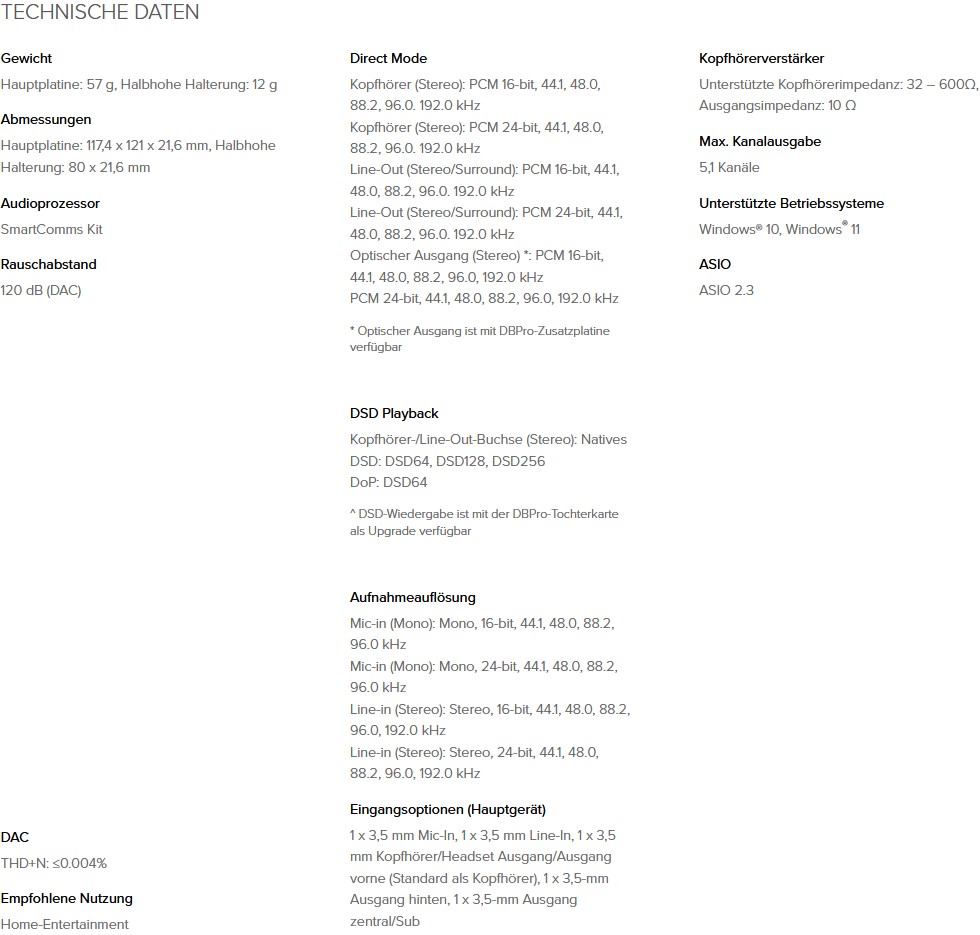
… and for the expansion card. However, both cards cost almost as much as the Creative Sound Blaster Z SE in total, which then makes this combination only about 25 Euros cheaper. If you still have the money for it, you should probably take a look at the other card I tested on the next page. It’s no longer a low-profile solution, but you also only need one slot for everything. That’s where you have to weigh things up.
- 1 - Introduction and Overview
- 2 - Humming and other unwanted "sound"
- 3 - Noise and jitter on the external USB DAC
- 4 - Graphics cards and intermodulation
- 5 - Onboard: Realtek ALC1220 vs. Realtek ALC1200
- 6 - Onboard: Realtek ALC4080 and ALC4082
- 7 - Datasheets: Realtek ALC1200, ALC 1220 and ALC 4080/ALC4082
- 8 - RMS voltage, output power and sound level
- 9 - Intern: Creative Sound Blaster Audigy FX V2 (Entry Level)
- 10 - Intern: Creative Sound Blaster Z SE (Mid-Class)
- 11 - Extern: Creative Sound Blaster G3 (Entry Level)
- 12 - Extern: Creative Sound Blaster X4 (Mid-Class)
- 13 - Summary and Conclusion















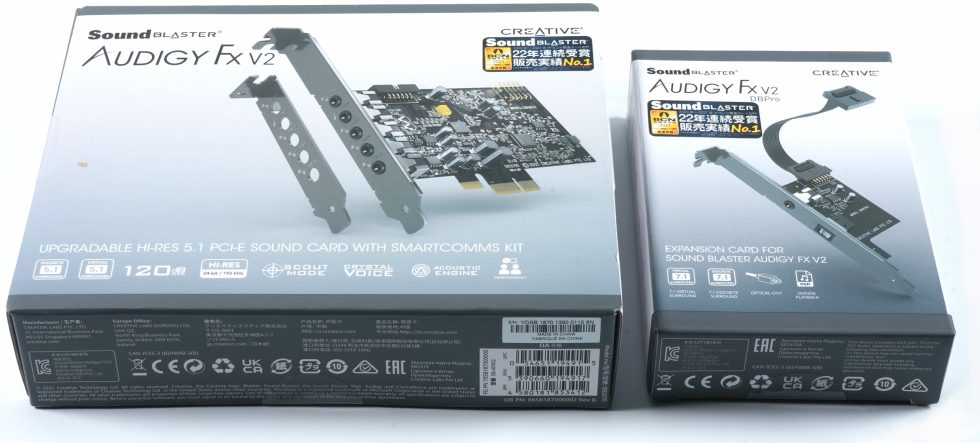
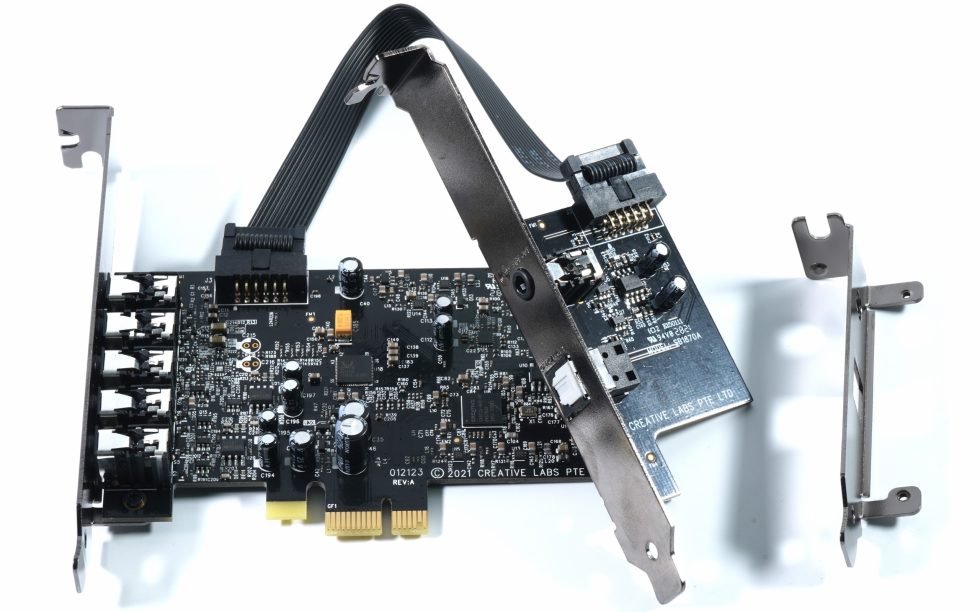
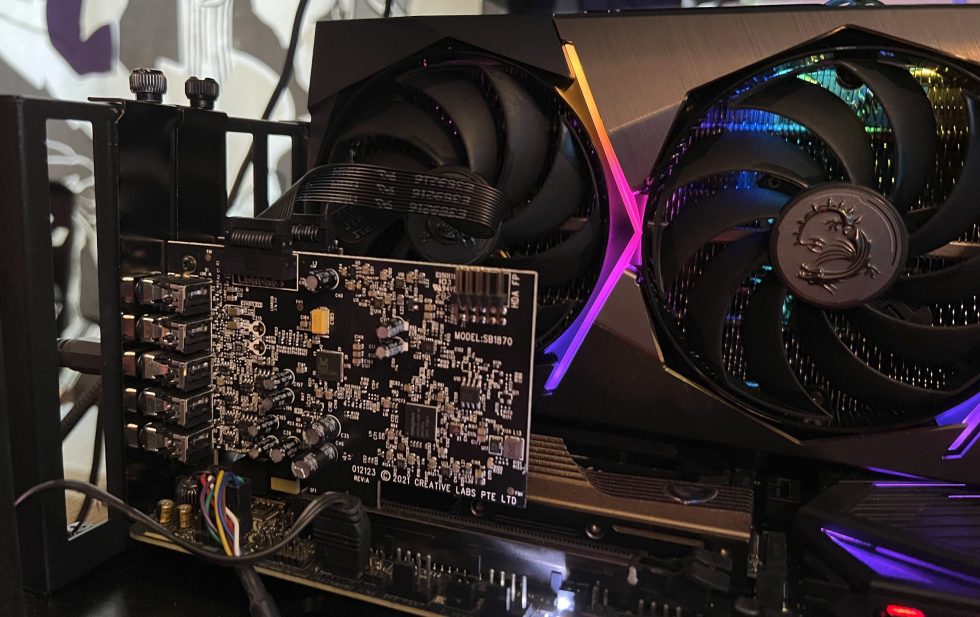
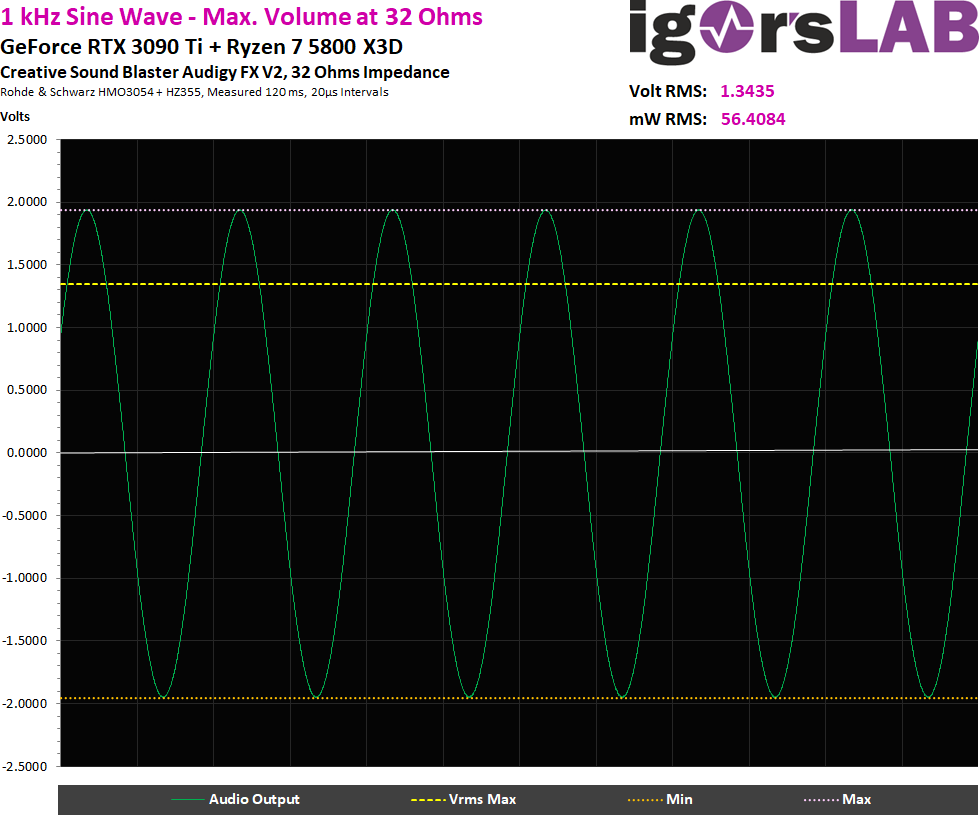
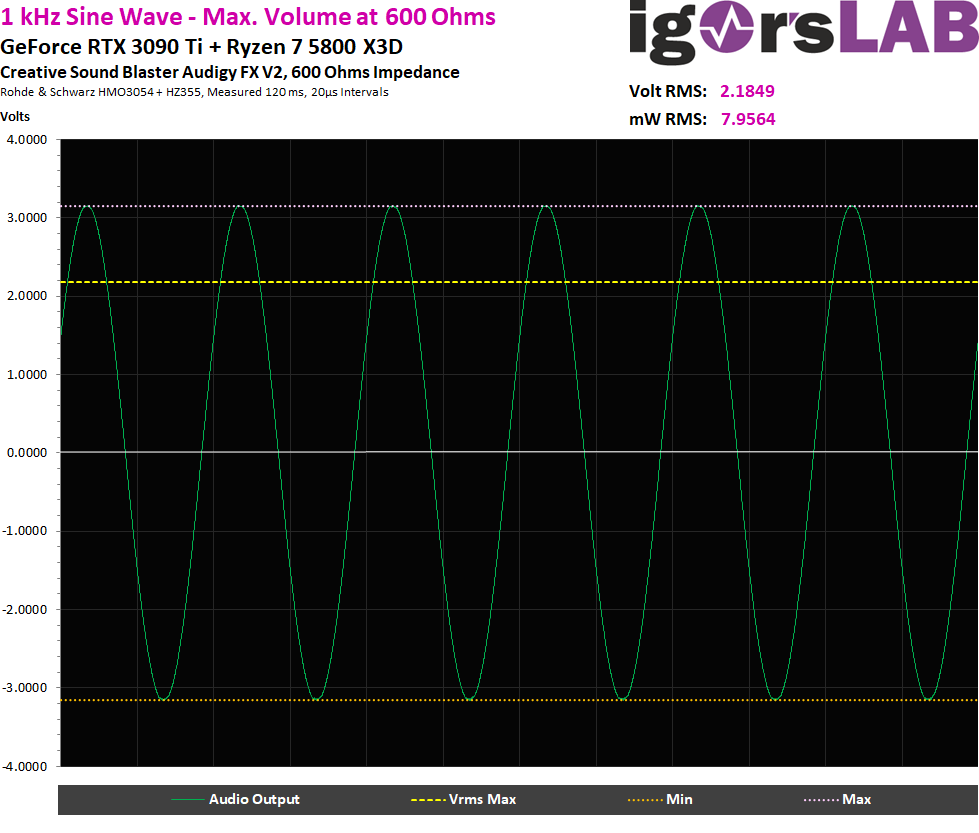
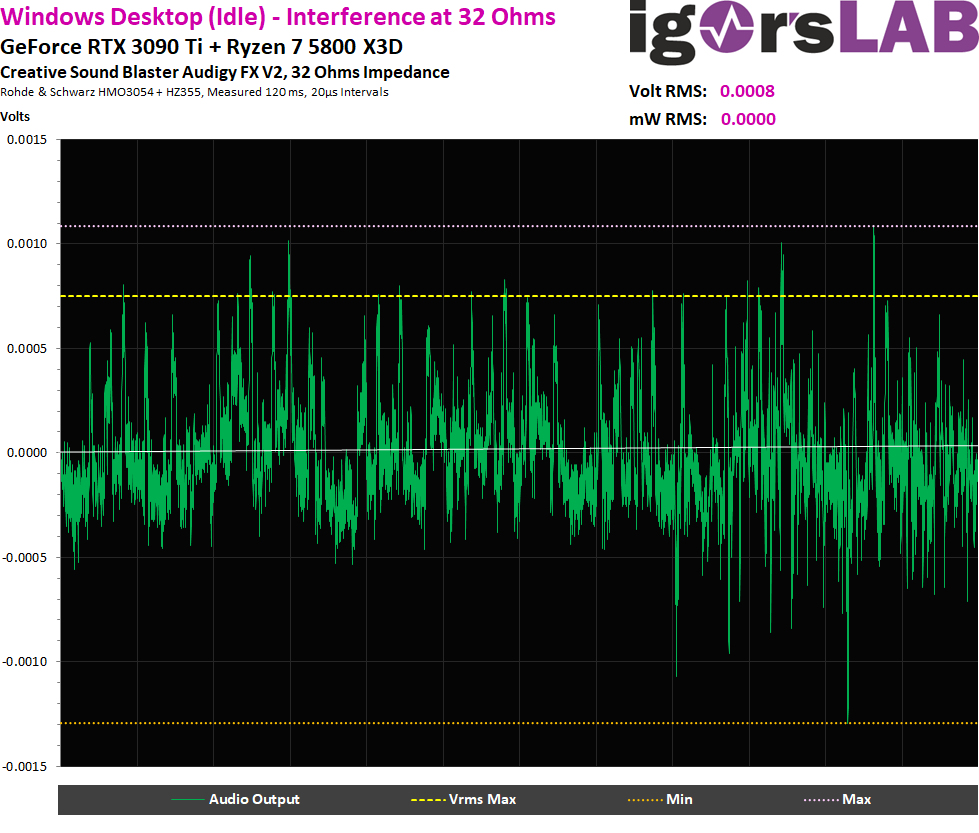
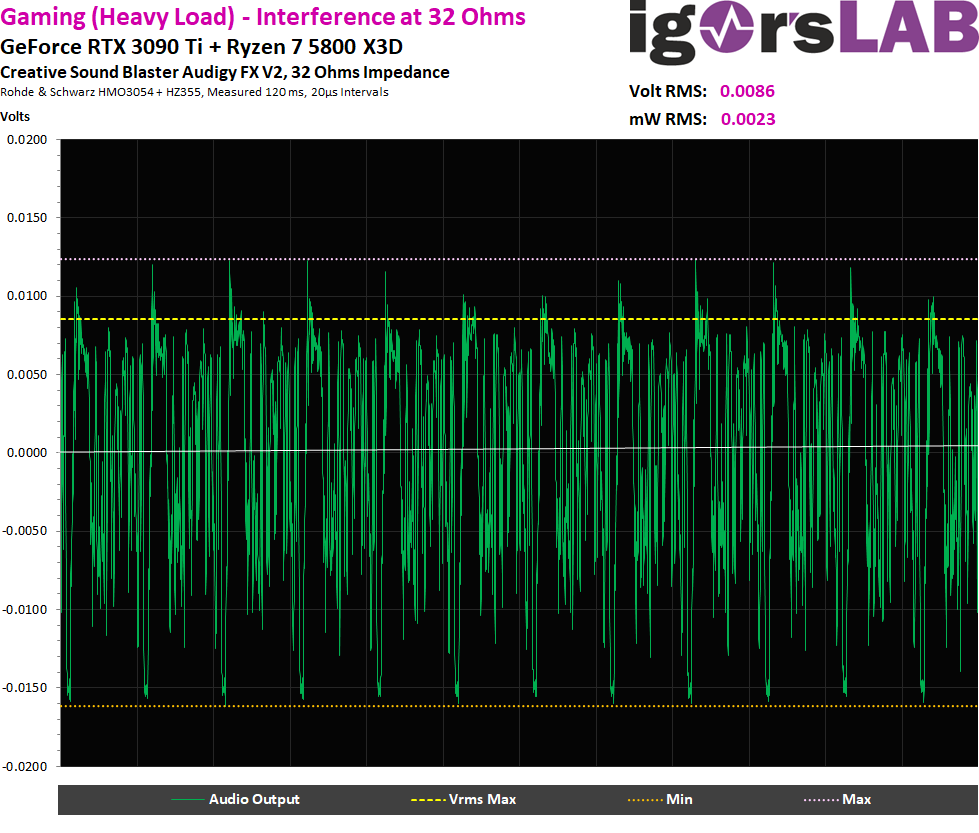
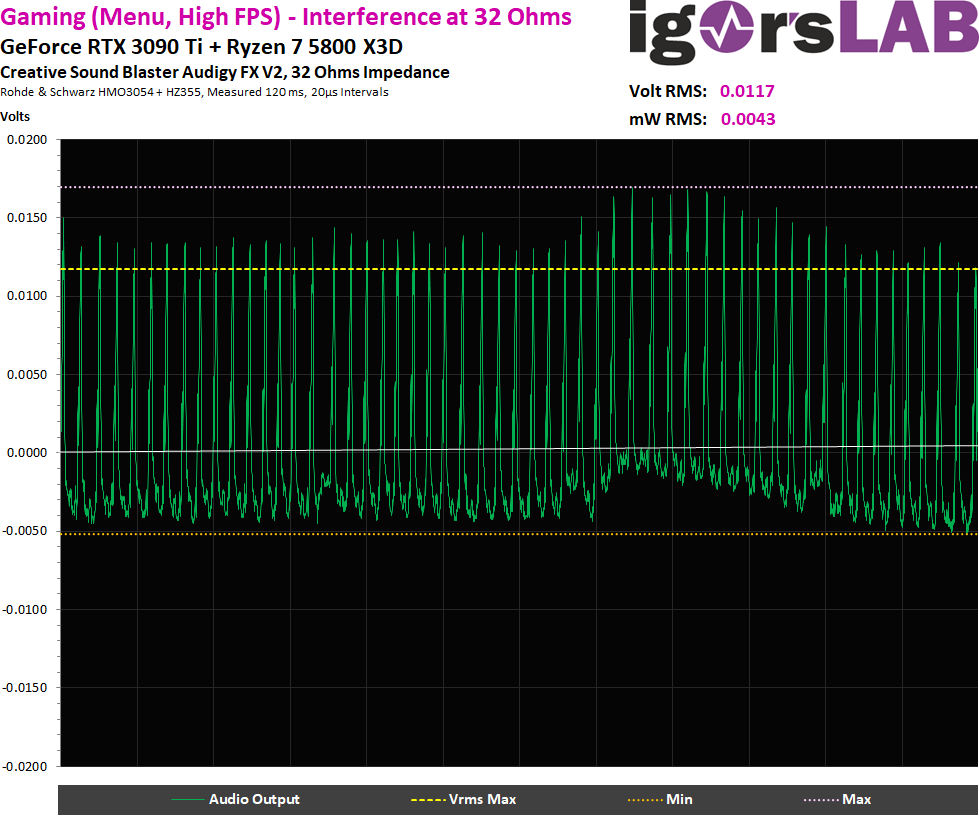
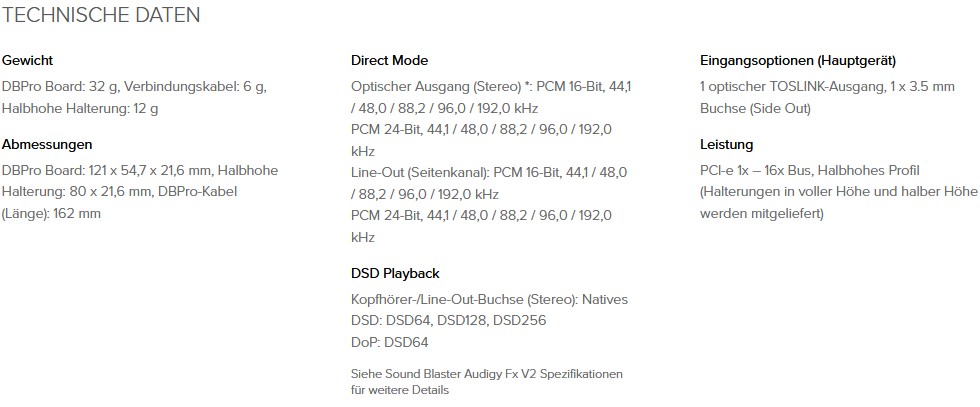


















199 Antworten
Kommentar
Lade neue Kommentare
Mitglied
1
Urgestein
Veteran
1
Veteran
1
Urgestein
1
Veteran
1
Urgestein
1
Urgestein
Urgestein
Urgestein
Urgestein
Urgestein
1
Alle Kommentare lesen unter igor´sLAB Community →